Items tagged with 'science'
Chad Orzel: Breakfast With Einstein
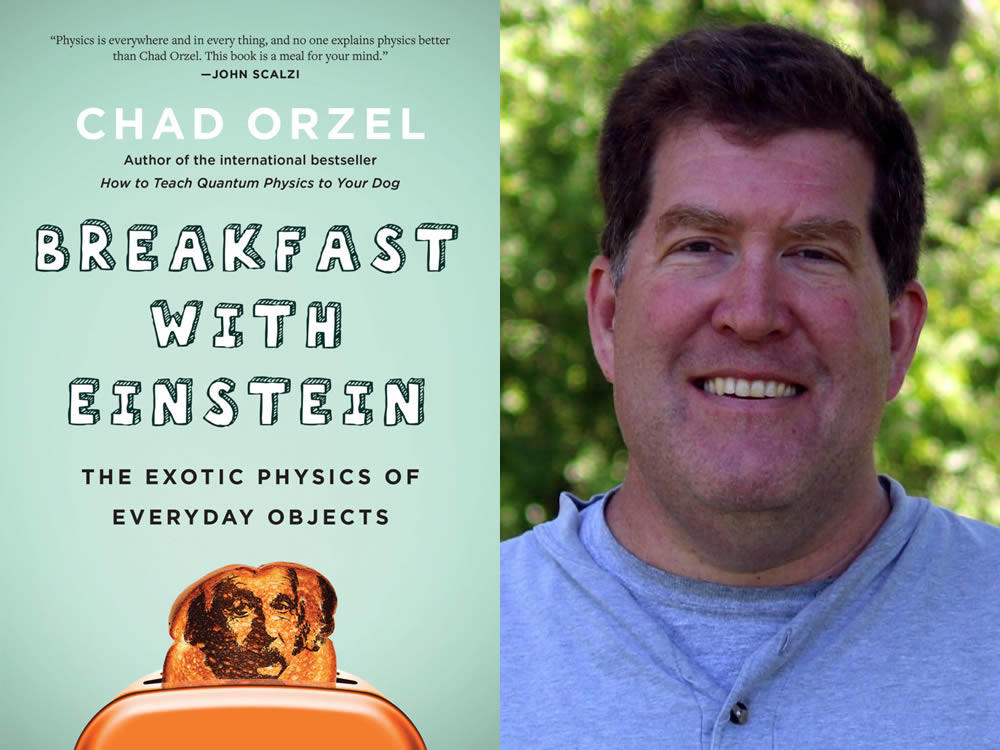
Check it out: Union College physics professor/science writer Chad Orzel has a new book out today called Breakfast with Einstein: The Exotic Physics of Everyday Objects. Blurbage:
In Breakfast with Einstein, Chad Orzel illuminates the strange phenomena lurking just beneath the surface of our ordinary lives by digging into the surprisingly complicated physics involved in his (and anyone's) morning routine. Orzel, author of How to Teach Quantum Physics to Your Dog, explores how quantum connects with everyday reality, and offers engaging, layperson-level explanations of the mind-bending ideas central to modern physics.
From the sun, alarm clocks, and the red glow of a toaster's hot filaments (the glow that launched quantum mechanics) to the chemistry of food aroma, a typical day is rich with examples of quantum weirdness. Breakfast with Einstein reveals the hidden physics all around us, and after reading this book, your ordinary mornings will never seem quite as ordinary again.
Orzel's previous book was Eureka: Discovering Your Inner Scientist . And How to Teach Quantum Physics to Your Dog was a Jeopardy! answer earlier this year.
(We're now looking forward to Waking Up With Newton and an explanation of why it's so hard to get out of bed in the morning.*)
Orzel will be at The Open Door Bookstore in Schenectady this Saturday, December 15 for a signing from 1-2:30 pm.
____
* Yep. That's a terrible inertia joke. Oof.
author photo via Oneworld Publications
Here's a chance to look through the telescope at Siena's new observatory
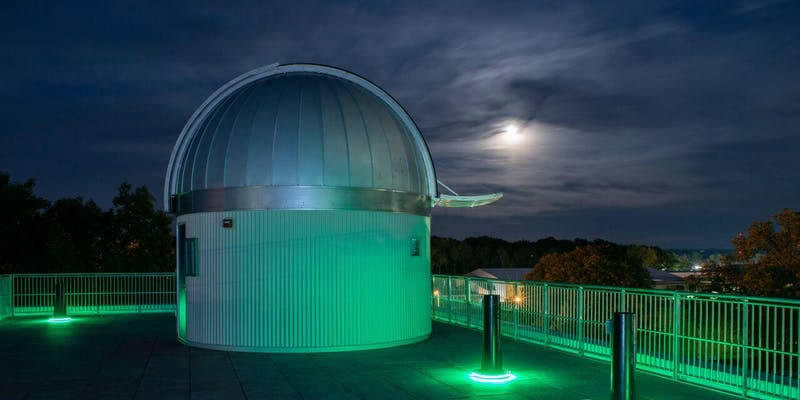
The grand opening for Siena College's new Breyo Observatory is Saturday, November 10. And the observatory will be open free to the public. Blurbage:
Enjoy the opportunity to view the moon, Mars and Saturn through the largest diameter telescope in New York's Capital Region. There will be activity tables for families hosted by Siena's Physics Club and Schenectady's Dudley Observatory, and a giveaway*. [*while supplies last]
That evening there will be a talk led by Fr. George V. Coyne, S.J., former director of the Vatican Observatory and head of the observatory's research group at the University of Arizona. The title: "The Dance of the Fertile Universe: A Meeting of Science and Religious Belief." That's at 6 pm, and viewing will follow.
Then from 8-10 pm, there will be viewing sessions members of the public blocked out in half-hour segments.
Registration is required for both the talk and the viewing sessions. See the link above.
(If it's cloudy that night the public viewing sessions will be moved to November 11.)
photo via Siena College
There's a new type of tick in New York State
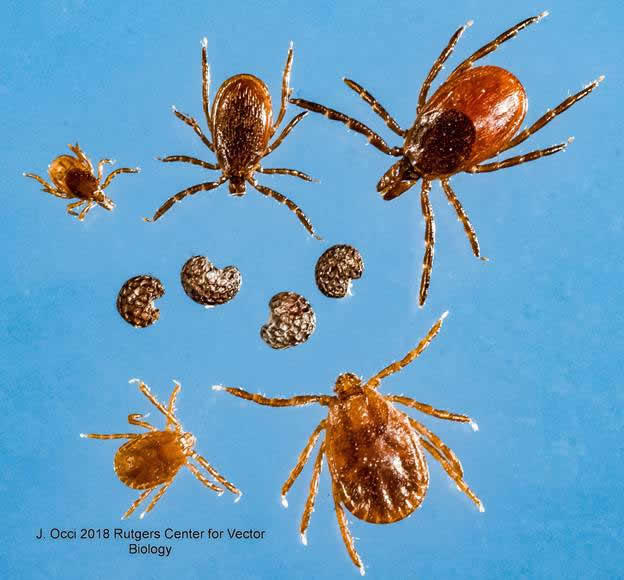 There's a new type of tick in New York, the state Department of Health announced Tuesday: Haemaphysalis longicornis -- the "longhorned tick." DOH says it was found in multiple locations in Westchester County. From the press release:
There's a new type of tick in New York, the state Department of Health announced Tuesday: Haemaphysalis longicornis -- the "longhorned tick." DOH says it was found in multiple locations in Westchester County. From the press release:
While the longhorned tick has transmitted disease to humans in other parts of the world, more research is needed to determine whether this can happen in the United States. Regardless, New Yorkers should continue to take steps to protect themselves, their children and their pets against ticks and tickborne diseases that are present in New York State.
This tick is also a concern for the New York State agricultural industry and may pose a threat to livestock. Farmers should continue to work with their veterinarians to check their animals, particularly cattle, sheep and horses, for exposure to ticks and to ensure their parasite control plans are up to date and working. Symptoms of tick-borne disease in cattle include fever, lack of appetite, dehydration, weakness and labored breathing.
That photo on the right compares deer ticks (top) and longhorned ticks (bottom) with poppy seeds (middle) for scale. (Click on the photo for a larger version -- we figured no one needed to see that up close unless they wanted to.)
The Hudson Canyon
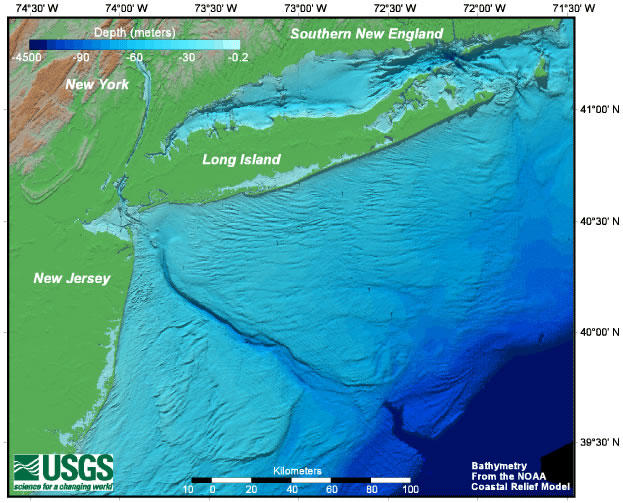
From the US Geological Survey Woods Hole Coastal and Marine Science Center
Not local exactly, but connected to here and kind of wild: A submarine canyon -- the largest on the eastern coast of the United States -- extends from the end of the Hudson River out through the continental shelf in the New York Bight. From the Friends of the Pleistocene blog:
The canyon dates to the Pleistocene and is actually an ancient extension of the Hudson River. During the Pleistocene, sea levels were 400 feet lower (in part because of all the water locked up in glaciers). The reduced sea level meant that the Hudson flowed 100 miles further east of its present location at the terminus of Lower Manhattan. The canyon carved by the Hudson extends a remarkable 450 miles across the continental shelf, then connects with the deep ocean basin where it descends to depths of 3 to 4 kilometers. As the Wisconsin Ice sheet retreated from what is present day New York City, the mighty Hudson of the Pleistocene transported heaps of glacial discharge and carved the surrounding landscape in its path.
As the state Department of Environmental Conservation noted today on Twitter, the canyon is home to many species of cold water corals. (It's also become a collection spot for all sorts of pollution that's been dumped into the ocean and washed down the Hudson River over the years.)
Earlier:
+ Odd and notable creatures of the Hudson River
+ That time whales swam to Albany
+ Ice Ages at the State Museum
A very animated explainer about ticks
This might not be the claymation that we want, but it's the claymation that we need.
The clip embedded above is a short claymation explainer about the life cycle of black-legged ticks and ways to protect yourself against them. It's from the New York State Integrated Pest Management program, which is associated with Cornell and the Cornell Cooperative Extension.*
Ticks and the diseases they carry are a big problem in this part of the country. And just last week the Cuomo admin a announced a new round of increased efforts to address the proliferation of ticks and the diseases they spread, such as Lyme.
But back to the video clip... It was created by Max Helmberger, an entomology grad student. Here's a Cornell news article about his work. And, yep, he has more claymation science videos on Youtube.
* Integrated pest management is a fascinating topic. It's basically about how humans can better deal with things like insects and weeds and plant diseases in ways that hurt the environment as little as possible.
Spotting the spotted lanternfly
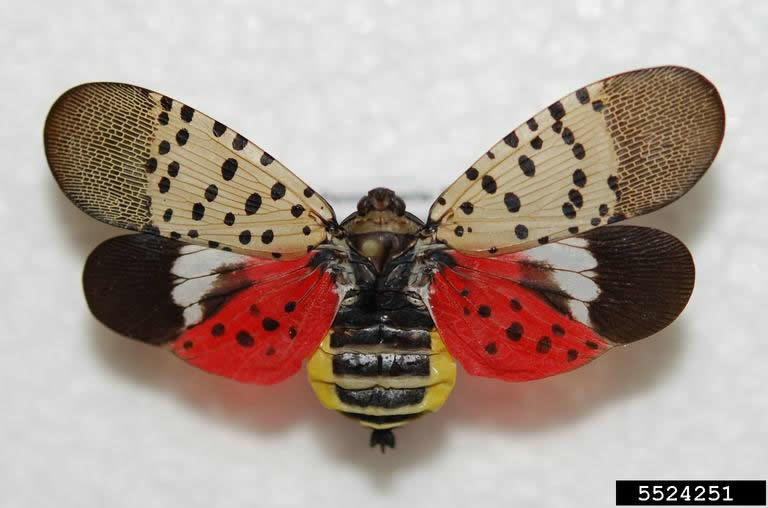
There is an insect called the spotted lanternfly. It's an invasive species here in the United States. And the state Department of Environmental Conservation would like you to report if you see one around here.
DEC reasons blurbage (emphasis added):
SLF pose a significant threat to New York's agricultural and forest health. Adults and nymphs use their sucking mouthparts to feed on the sap of more than 70 plant species. This feeding by sometimes thousands of SLF stresses plants, making them vulnerable to disease and attacks from other insects. SLF also excrete large amounts of sticky "honeydew," which attracts sooty molds that interfere with plant photosynthesis, negatively affecting the growth and fruit yield of plants. New York's annual yield of apples and grapes, with a combined value of $358.4 million, could be impacted if SLF enters New York. The full extent of economic damage this insect could cause is unknown at this time.
Although native insects also secrete honeydew, the size of SLF and the large populations that congregate in an area result in large accumulations of it. The sticky mess and the swarms of insects it attracts can significantly hinder outdoor activities. In Pennsylvania, where SLF populations are the densest, people can't be outside without getting honeydew on their hair, clothes, and other belongings.
Ew. Also: the term "sucking mouthparts."
The recipe for a thunderstorm
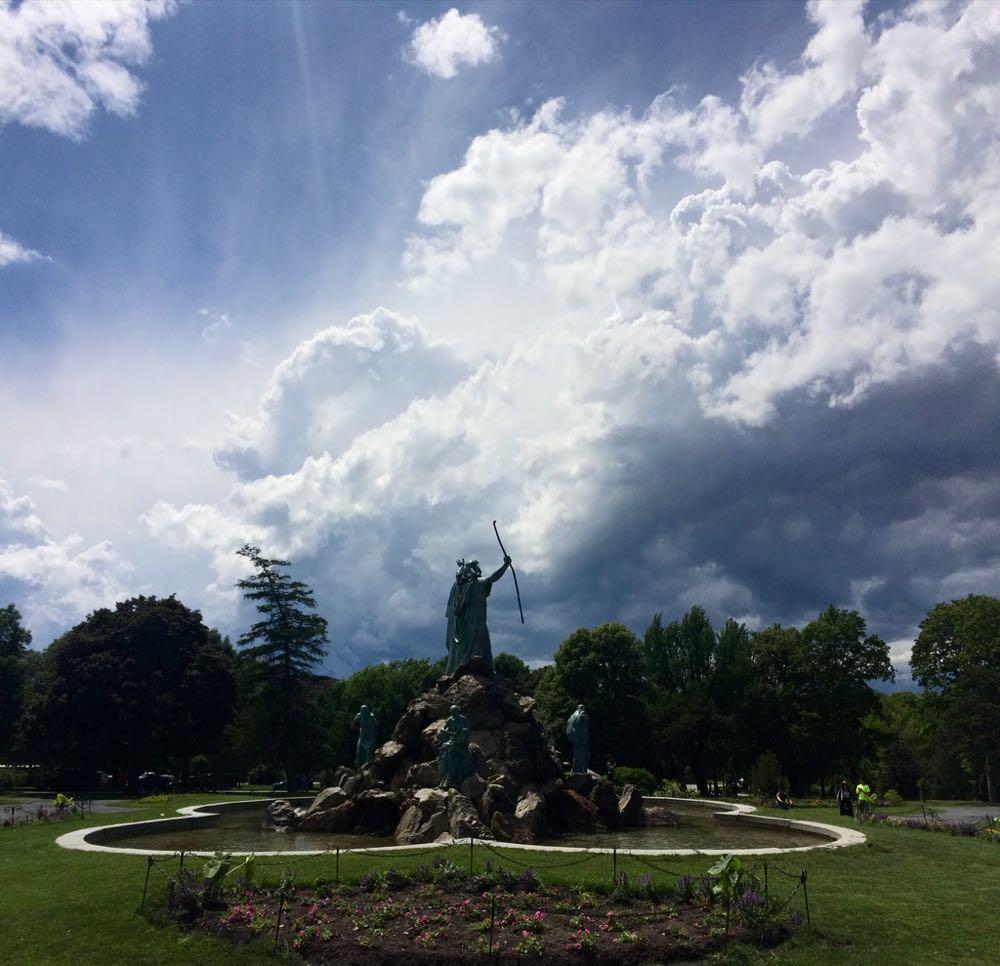
You no doubt know Jason from his many years as a meteorologist on TV here in the Capital Region. He's helping us nerd out on some local weather stuff. Got a question about how local weather works? Send it along!
I was an on-air meteorologist for 17+ years and during that time I visited over 200 schools to give weather talks. The most frequently asked question was: "Why/how did you get in to meteorology?"
The answer is simple: thunderstorms.
Damn things used to freak me out, especially at night. You're like six years old, the whole room lights up and then, BOOM. No, thank you. Didn't want any part of that mess.
But one day my father took me down to the main branch of the Albany Public Library to learn about thunderstorms, and that's exactly what I did. I quickly found out how simply amazing thunderstorms are. And by the way, so is the rest of our weather.
I was hooked, and always will be.
Science in politics, scientists in bars, and another March for Science in Albany
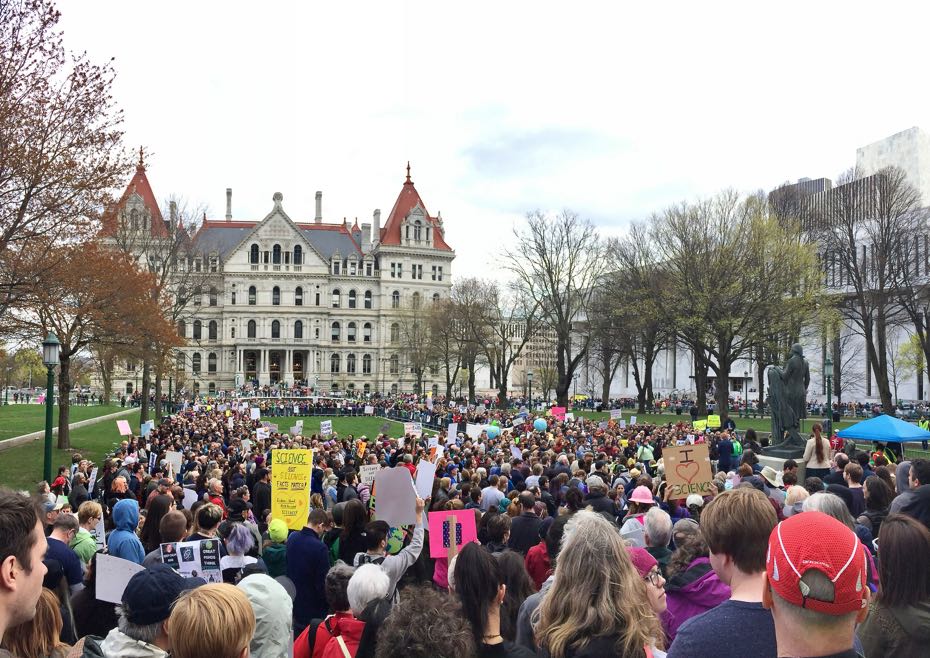
The crowd at last year's Albany March for Science.
The Albany March for Science returns to West Capitol Park this Saturday. It's the second year for the event -- last year's event drew thousands of people rallying to support research funding and evidence-based public policy on issues such as climate change.
This time around the event will again feature speakers, a march, and hands-on science activity tables.
There are a bunch of local academic and research orgs backing event, including a new local non-profit called CapSci that's aiming to promote public understanding of science through all sorts of events.
We talked with one of the organizers of this year's march -- Sarah Berke, an associate professor of biology at Siena -- about the motivation for a second march and... scientists in bars.
Very well acquainted, too, with matters mathematical, they are the very model of a modern forecast meteorological
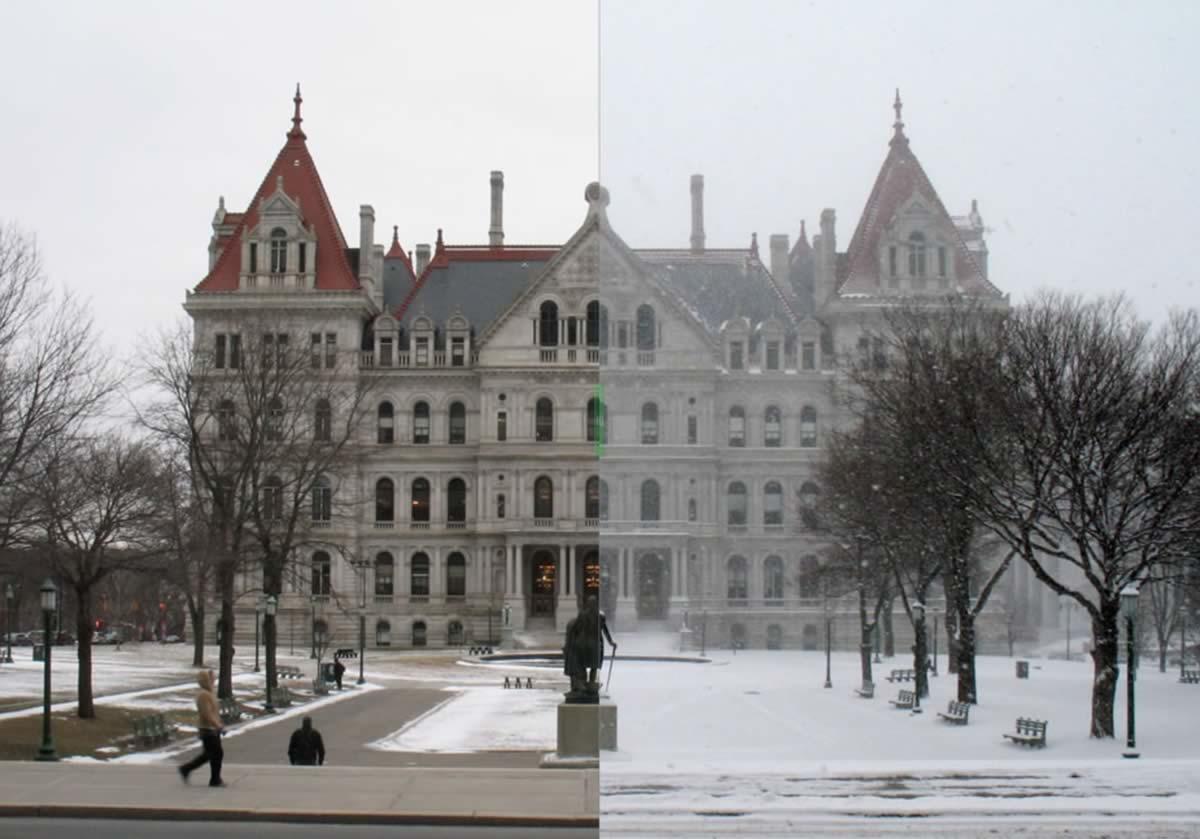
Sometimes the models can't agree on what the picture's going to look like.
We're happy to welcome Jason Gough to AOA as a contributor. You no doubt know Jason from his many years as a meteorologist on TV here in the Capital Region. He's going to help us nerd out on some local weather stuff. Got a question about how local weather works? Send it along!
If you watched me over the years for your weather forecasts on even a semi-regular basis -- and thank you if you did! -- you may have noticed that when winter storms came into the mix, you heard something like: "I'm tracking the storm, but the models don't agree on things just yet. Still a few days to sort it all out."
The models? What's that all about?
The earth beneath our feet
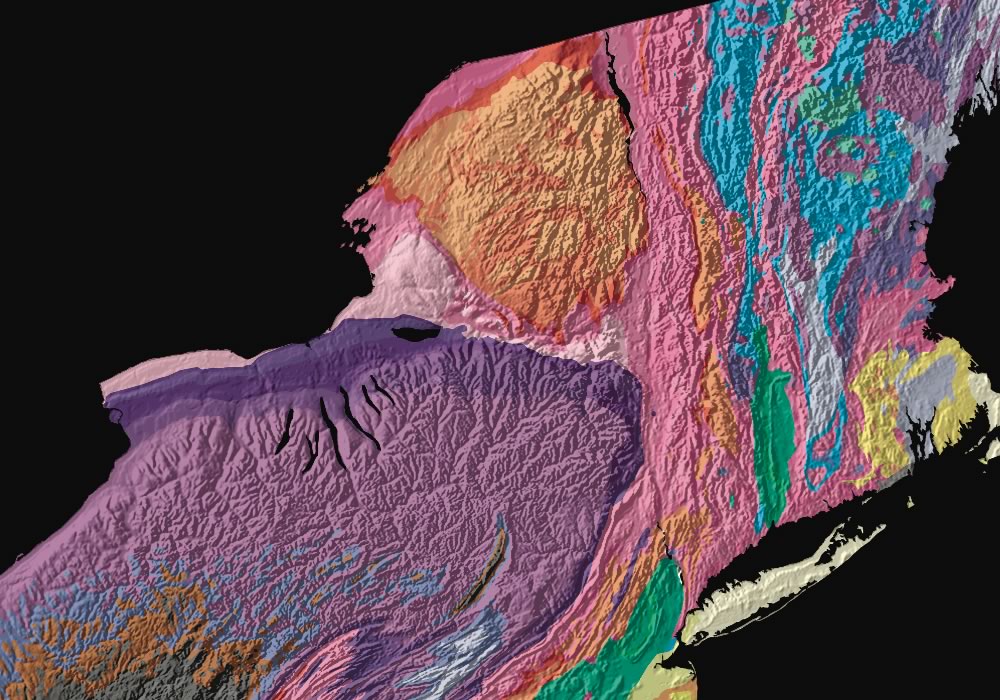
Friday afternoon geology*: Check out this US Geological Survey map showing the topography and geology of New York State and nearby areas. We clipped this section from a national map -- see that link above -- which is really worth a look.
The map colors correspond to the age of the rock. The purple area dates back to about 400some million years ago. The pink dates back to around 500some million.
And then there are the Adirondacks, which (literally) just stick out. So we looked up a little bit about their geology. From an Adirondack Park Agency explainer:
The Adirondack Mountains are very different in shape and content from other mountain systems. Unlike elongated ranges like the Rockies and the Appalachians, the Adirondacks form a circular dome, 160 miles wide and 1 mile high. Although the Dome as we know it today is a relatively recent development, having emerged about 5 million years ago, it is made of ancient rocks more than a 1,000 million years old. Hence, the Adirondacks are "new mountains from old rocks."
____
*What, when is your day and time for thinking about geology?
[via Kottke]
Brain Food for the Curious returns for a new season at the State Museum this week

The State Museum's "Brainfood for the Curious" series of short lunchtime talks starts a new season this Tuesday, October 17.
A museum historian or scientist gives a 20-minute talk in the museum's Huxley Theater and then answers questions. The talks cover all sorts of topics, from history to fashion to geology to archaeology to biology. Each event starts at 12:10 pm. They're free.
Here's the schedule for the new season...
Chronicling the eclipse in Albany... in 1806
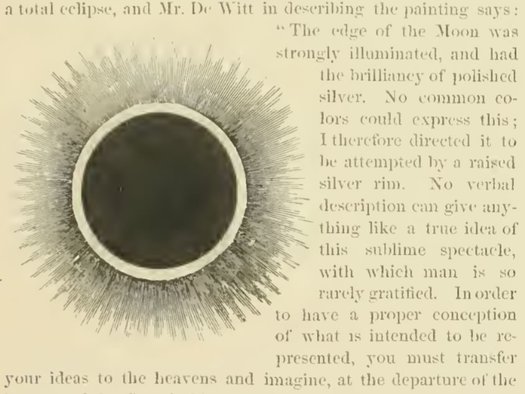
Because eclipse: On June 16, 1806 there was a total eclipse, and the path of totality passed pretty much directly over the Albany area. It was, in the words of Simeon De Witt, a "sublime spectacle" that fixed "the gaze of man in silent amazement" for several minutes.
De Witt was the Surveyor General of New York State at the time and worked from the Capitol in Albany. He summarized the experience of the eclipse in a letter to Benjamin Rush and the American Philosophical Society. Accompanying the letter: a painting the eclipse by the noted local portraitist Ezra Ames (more on that in a second). A clip:
[The painting] gives, I believe, as true a representation of that grand and beautiful phenomenon, as can be artificially expressed. The edge of the moon was strongly illuminated, and had the brilliancy of polished silver. No common colours could express this; I therefore directed it to be attempted as you will see, by a raised silvered rim, which in a proper light, produces tolerably well, the intended effect.
A few spots around the Capital Region for watching the eclipse
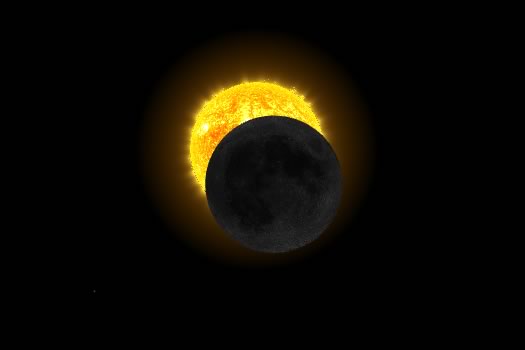
A simulation of what the eclipse will look like at its maximum coverage here. It's from NASA's "Eyes on the Eclipse" online app, which is fun to play with.
Updated
As you've no doubt heard, the moon is going to get between the Earth and the sun Monday, casting its shadow across this part of the world. And though the Capital Region isn't in (movie trailer voice) THE PATH OF TOTALITY, we will see a partial eclipse between 1:22 pm and 3:56 pm (maximum eclipse at 2:42 pm).
If it's not cloudy, you'll be able to see what's happening -- while wearing proper eye protection -- from anywhere with a clear view of the sky. But it might be more fun to see it with other people, some of whom can explain exactly what's happening. (Luna's throwing shade. That's what's happening.)
So here are a few of those places to catch the eclipse in the Capital Region...
Science on Tap: "The Riddle of the Invisible Dark Matter"
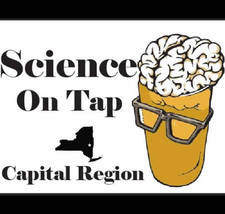 The local drink-and-discuss series Science on Tap is still rolling along after starting up this past February. The next talk is Tuesday, June 27 at MopCo in Schenectady. The topic: "The Riddle of the Invisible Dark Matter":
The local drink-and-discuss series Science on Tap is still rolling along after starting up this past February. The next talk is Tuesday, June 27 at MopCo in Schenectady. The topic: "The Riddle of the Invisible Dark Matter":
We are sure that it exists! Searches for this mysterious "dark matter" have gone on for decades, but discovery still eludes us. Please join Dr. Matthew Szydagis, Assistant Professor of Physics at UAlbany, at MOPCO Theatre where he will discuss the status of these searches.
The talk starts at 7 pm and admission is free.
Science on Tap is a monthly series aimed at providing opportunities for conversation between scientist and the general public. Previous talks have focused on solar eclipses, conservation, and "how to smell bullshit."
The old observatory
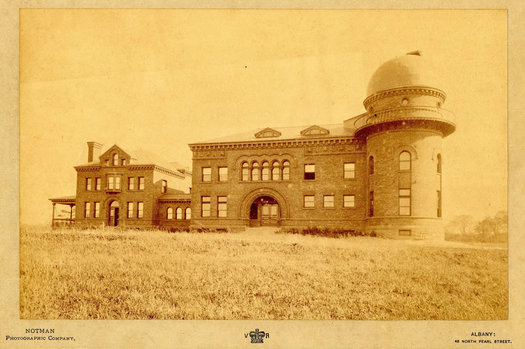
Speaking of observatories... Albany had an observatory. In fact, the observatory still exists... just not in Albany.
The Dudley Observatory was once located at different spots in the city of Albany -- in north Albany, and then on the triangle of land between New Scotland Ave, South Lake, and Myrtle. (The Capital District Psychiatric Center is there now.)
That photo above is from the former observatory building on South Lake. From The Dudley's history blog, Counting Stars:
The second building is Dudley's most famous, and it was one of the most iconic buildings in Albany at the time. It showed up in postcards and maps of the era. It was an imposing Romanesque structure of red brick, two stories tall with an observatory tower at the western end. To the east was the residence of the director and temporary housing for visiting astronomers. In the center were the rooms for the computers, the library and the rooms for the resident astronomers.
And those computers? People -- usually women. (Yep, like in Hidden Figures.)
The observatory sold the building to Albany Med in the 1960s (it later caught on fire), and moved to an office on Fuller Road. It's now located at miSci in Schenectady.
photo via The Dudley Observatory
Siena looks to the heavens
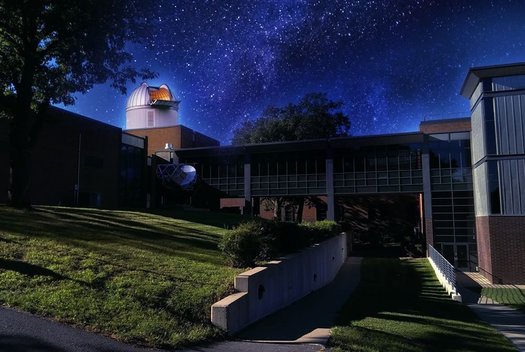
A rendering of the planned observatory.
Something to watch for: Siena is building a new observatory that it says will house the area's largest telescope. Work is scheduled to start this summer on the college's Loudonville campus and it's aiming for the telescope to be up and running this fall.
Press release blurbage:
The permanently-mounted telescope will be housed in a 16-foot structure atop Roger Bacon Hall, topped by a rotating dome with a retractable opening. The telescope will feature a 27-inch diameter mirror that can be remotely controlled via the internet.
The telescope will allow eyepiece observing of such favorites as the moons of Jupiter and Saturn's rings, and will have sophisticated imaging that will be used to track near-Earth asteroids and to follow the fading light of exploding stars, according to [physics professor] Dr. [Rose] Finn. In addition, a spectrograph will allow for analysis of the chemical composition of stars, nebulae and galaxies.
The observatory won't be used by just physics and astrophysics faculty and students - Dr. Finn said that more than 30 percent of Siena students take Introduction to Astronomy as a liberal arts elective, and they will be able to use the telescope as well.
Students and faculty will use the observatory for their coursework and research, and public observing sessions will be held throughout the year.
Siena got a $467,402 grant for the project from a foundation.
Other observatories
Two other observatories in the area:
+ The Dudley Observatory at miSci, which hosts all sorts of events and classes, including star parties with telescopes. (See also its blog)
+ The Hirsch Observatory at RPI often offers public viewing sessions on Saturday nights.
image via Siena
Signs from the Albany March for Science
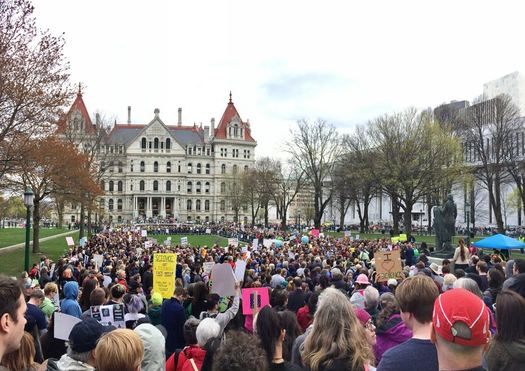
Thousands of people gathered in West Capitol Park Saturday for the Albany Science March event to rally support for research funding and evidence-based public policy on issues such as climate change. (Here's more about the motivation for the event.) It was one of many related marches around the country.
As with most events likes this, many of the people at the Capitol had signs. Unlike most events like this, many of those signs involved mathematical puns or other nerdy references and jokes.
Here are a bunch of those signs, along with a handful of photos from the event...
Talking about the motivation for the March for Science in Albany

From the women's march in Albany in January. "I was very excited after seeing the momentum after the women's march in Albany, so I wanted to get involved," said Jessica Reichard, one of the organizers of the upcoming Albany march for science.
The presidential election has stirred a lot of people to take action or speak up in ways that maybe they haven't in the past, prompting new connections and organizing.
The next example is this Saturday, when there will be a March for Science in DC and cities around the country, including here in Albany. The mission statement for the local event:
• Promote scientific education for both adults and children
• Increase communication between scientists and the community
• See how government and scientists can work together
• Join with the National March to demonstrate the public support worldwide for evidence-based policies
The Facebook page for the event in West Capitol Park and subsequent march has almost 2,000 people marked as planning to go.
"One of the things that I've found most remarkable is the way our group has formed organically," said Jessica Reichard, an engineer and one of the organizers of the Albany event, this week. "None of us knew each other before organizing this -- we just connected on Facebook and it just kind of took on a life of its own with a lot of passionate people."
Here's a quick chat with Reichard about the motivation for the event in Albany and the intersection of science and politics...
Ice Ages at the State Museum
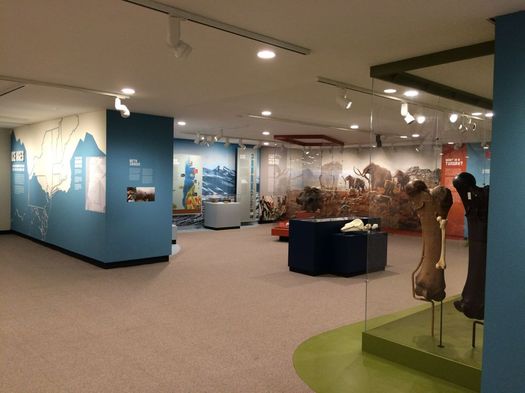
The State Museum opened a new exhibit last week -- Ice Ages -- that is about... well... ice ages in New York. (Surprise!) It's back by the Cohoes Mastodon and worth a stop the next you're at the time museum. It'll be on display until the beginning of 2019.
We got a chance to check out the exhibit recently. And now let us quickly nerd out on a few things from it...
Adapting for a more extreme future
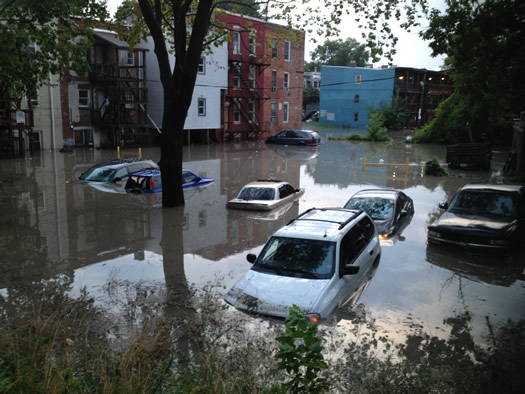
Flash flooding in the city of Albany in 2014 when a storm dropped almost three inches of rain in less than an hour. / photo via Laura (thank you)
The Northeast US is looking at average temperature rises of a few degrees over the next century because of climate change, according to the some of the best estimates. And while an increase of, say, 4 degrees might not sound like much, it's setting up a future in which the extremes are likely to be more extreme and more common: hotter heat waves, bigger rainfall events, more common floods.
Radley Horton, a climate scientist at Columbia University's Center for Climate Systems Research, was at UAlbany this week for a program about extreme events prompted by climate change and their effects on human health.
We got a chance to talk with him for a few minutes about how climate change is already affecting this part of the country, what could be ahead, and how we might adapt.
Clean tech hackathon at Tech Valley Center of Gravity
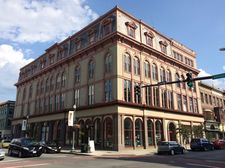 The Tech Valley Center of Gravity in Troy is hosting a clean tech hackathon October 15-16. It's free to attend if you'd like to gawk at what's been made. And if you have a team that would like to take part, registration is still open -- there will be $5,000 in cash prizes.
The Tech Valley Center of Gravity in Troy is hosting a clean tech hackathon October 15-16. It's free to attend if you'd like to gawk at what's been made. And if you have a team that would like to take part, registration is still open -- there will be $5,000 in cash prizes.
What is this hackathaon? Blurbage:
A hackathon is an event, usually lasting more than a day, where groups of computer programmers and other tech-oriented people collaborate intensely on projects using software. Hackers typically staying in the space the entire time working constantly. To help inspire the competitors, organizers of the TVCOG Clean Tech Hackathon have solicited problem statements from key players in the industry in the areas of Advanced Buildings, Renewables and Clean Transportation. Some problems hackers may tackle include: making solar photovoltaic and wind energy more predictable; innovations in "smart" building technology that can adjust energy usage based on intelligent predictions of the occupants' behaviors; and designing hardware/software solutions that use on-street installations to improve bike and pedestrian safety and comfort.
Participating teams will have mentors from NYSERDA, BessTech, The Wagoner Firm, New York State Mesonet, and Bette & Cring Construction Group. Also: "An abundance of high quality free food is available to all hackers and participants."
As mentioned above, it's free to attend or participate, but registration is required.
TVCOG advertises on AOA.
But if there were mountain lions here...
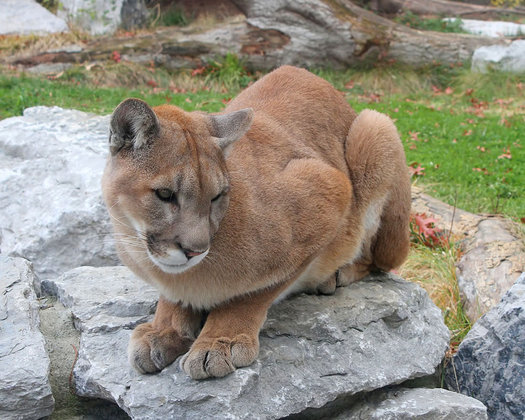
For hire? / photo: Greg Hume (CC BY-SA 3.0) via Wikipedia
An interesting thing about the way the landscape of the Northeast has been changing over the last century is that the amount of forested land has actually increased as many areas that were once cleared for farming have fallen back into being covered by trees.
These new forests aren't exactly like the old forests, though. Among the differences: they lack some of the large predators of the past -- notably cougars/mountain lions and wolves. That might not seem like a big deal for humans -- it might even seem like a good thing, considering those sorts of animals can be a bit fear inducing. But one of the side effects is that deer now lack a natural predator, and their populations have exploded.
There are so many deer. And they cause all sorts of problems -- from car crashes, to disease transmission, to habitat destruction, to grazing on gardens.
So. If we could get some of these predators back in this area -- mountain lions, specifically -- what might that be worth?
Science Cafe at City Beer Hall: evolution
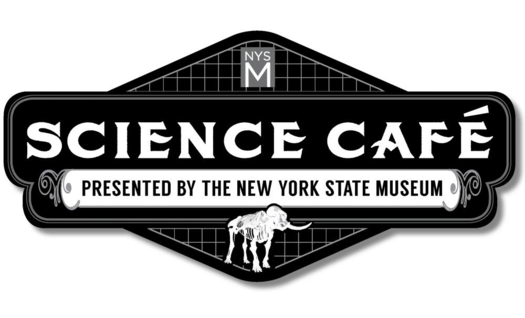
The State Museum has set up another Science Cafe event at the City Beer Hall for May 12.
This time around the topic is evolution and the guest speaker will be Lisa Amati, the state paleontologist and the museum's curator of invertebrate paleontology. Craig Gravina, an exhibit designer for the museum (and, of course, also a beer historian and occasional AOA collaborator), will again serve as host for the informal discussion.
We hear Amati's short talk will center on evolution as an observable phenomenon, and its connection to examples such as antibiotic resistance and mosquitos adapting to the environment of the London Tube. After the talk, there will be Q&A with the crowd. (And we suspect Craig has a few fun questions of his own to ask...)
Here's a NYT profile of Amati and her research from last summer.
The Science Cafe event at the City Beer Hall is Thursday, May 12 at 6 pm. It's free to attend (food and drink not included). The first event was packed, so it's probably worth getting there a little early to grab a good spot.
The Atlas of Inland Fishes of New York
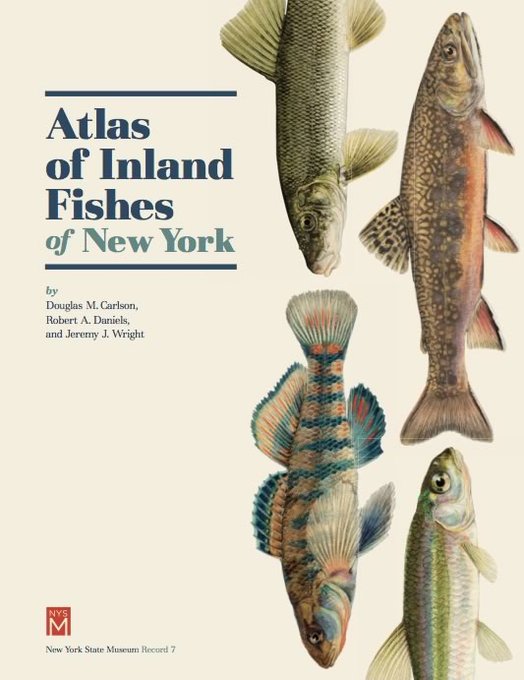
There are 181 native and introduced freshwater fish species in New York State.
That's one of the many, many bits in a huge new catalog of the state's fish released this week as part of joint effort by the New York State Museum and the state Department of Environmental Conservation. It's the first such publication in three decades.
The book is available to download for free as a pdf from the State Museum website.
The Atlas of Inland Fishes of New York is pretty much exactly what it sounds like. It includes photos or illustrations of each of the state's different fish species, along with maps depicting where the fish have been found both in the past and present. As the atlas preface notes of New York: "its freshwater fish species represent one of the richest and most scientifically fascinating ichthyofaunas in the Northeastern United States."*
It's fascinating to flip through the atlas, gawking at some of the wildly-colored or shaped fish, and seeing how they compare or contrast with other similar fish. It's also interesting to see the geographic ranges of each species plotted -- how some species live only in a few river corridors, others are confined to specific watersheds, and others are pretty much everywhere.
And if nothing else, some of the names are great: Gizzard Shad, Central Stoneroller, Northern Redbelly Dace, Tonguetied Minnow, Rosyface Shiner, Bigeye Chub, Northern Hog Sucker, Threespine Stickleback, Pumpkinseed, Tesselated Darter, and so on...
* "Scientifically fascinating ichthyofaunas" really should be some sort of state marketing slogan.
What, your job doesn't involve baby bears?
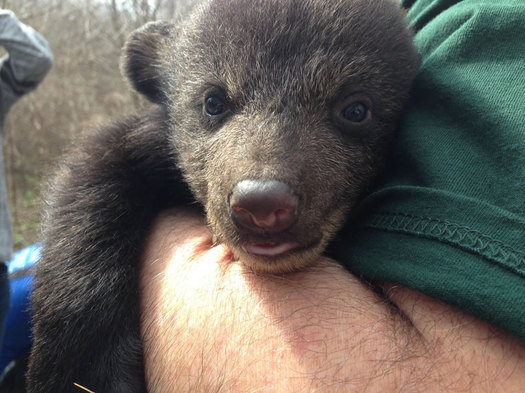
Oh, hello, there...
Filed under "jobs we didn't know existed" and "the cuteness is too much": Biologists with the state Department of Environmental Conservation have been visiting bear dens around the state to gather data about bear populations in New York. And that process involves (temporarily) removing bear cubs from the dens so they can be weighed.
This week the DEC posted photos from one of these recent den visits -- in Allegany State Park -- on its Facebook page. That's one of the pics above. A clip from the post:
The 173-pound sow was ear-tagged and fitted with a GPS tracking system collar. The collar collects GPS points at set intervals, then sends the location via text messages - so even bears are getting in on texting these days! DEC staff carefully monitored the sow's vitals during the process. The bandana is used to protect her eyes while she is immobilized.
During this time, the three cubs were ear-tagged and weighed only. There were 2 males and 1 female bear cub. The cubs were fairly small (3-4 pounds each) and healthy, probably meaning they were born in late January. After the work was done, the sow is placed back in the bear den with her cubs, where they will stay until the cubs are big enough to keep up with their mother in the woods, typically another few weeks.
DEC says it will be sharing more from these bear den visits over the next week.
Black bear populations in New York State have "increase[d] dramatically in number and distribution in recent decades," according to state's Black Bear Management Plan published in 2014 -- and there are now more than 6,000 bears estimated to be in the state, across large portions of upstate.
Earlier on AOA:
+ Don't feed the bears
+ There's a moose... and there's a moose... and there's a moose...
photo: NYS DEC
... said KGB about Drawing: What's something that brought you joy this year?